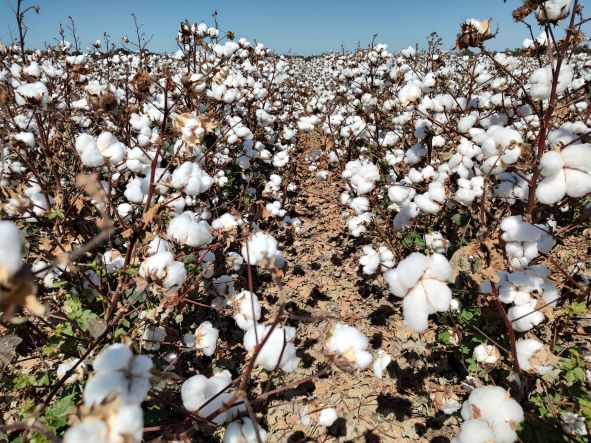A Change in China’s Cotton Policy Is Coming. Just Don’t Ask When.
From Cotton Grower Magazine – August/September 2014
Remember the traveling carnivals when you were a kid?
Often – depending on the time of day or other distractions – the operator might leave a ride running longer than usual. If you happened to be riding at the time, that was great. For a while. Then you wanted to get off. But you couldn’t.
You were at the mercy of the operator.
Today’s cotton market feels a bit like riding those old Scramblers and Tilt-A-Whirls. The market has gone up and down and sideways, hovering around the line between profit and loss for so long that the ride has become confusing and exhausting.
Is there an end in sight? Apparently not, as long as China remains the operator.
“China is going to continue to be our problem in this market,” said Anthony Tancredi, head, Cotton Platform for Louis Dreyfus Commodities. “They may be changing what they’re doing or changing what they’d like their impression in the world to be, but they’re not changing the fact that they are firmly imbedded in everything going on in cotton.
“The most important thing for anyone in the market to know is what the Chinese policy is,” he added. “But right now, no one knows – or is sharing – what that policy is.”
Changes Underway
Tancredi says that changes are already underway in China.
Production numbers are going down, as acreage drops in the Central Region of China and the industry consolidates into the Far Western provinces of the country where conditions are more conducive for large scale cotton operations. The government opened up the country’s Reserve to sales through the end of August. And, officials have announced that will not be as active in the import market as before.
Consumption numbers, however, are starting to move in a positive direction.
“Are we heading back to normal – whatever normal for cotton might be?” asked Tancredi. “Is China stepping aside? Are they going off the grid instead of being permanently on? It looks to us like they’re trying to reevaluate what they want to do. And until that’s clear, they’re not going to make any decisions.
“The reality is that no matter how much we want that picture to be clear, it isn’t,” he said. “We’re sitting in a very unclear situation, and it’s very difficult to produce any information that actually says here’s what we can expect. Their policy is supposedly changing. But the question is what do they do next after they stop selling Reserve cotton on August 31?”
According to market sources, the Chinese have promised new published policy rules for several months. Tancredi noted that completion of those rules has been rumored, but the release date remains a mystery. When – or if – those rules materialize, he says it’s going to be a market mover, one way or the other.
“The Chinese like price stability,” he explained. “They like the market between 70 and 90 cents, without big spikes or valleys. They know they don’t want as much cotton as they have. But if market continues to fall, they’ll come in and buy again, even though they have 60 million extra bales on hand. They have to figure out how to reduce that inventory without it becoming a big market factor.”
Tancredi admits that today’s marketplace is rife with rumors being reported as fact. And, any facts that are being accurately reported could be market movers. The key is to get legitimate confirmation on any and all market information.
“For the most part, don’t buy anything unless you get confirmation,” he suggested. “In this particular case, you may be better off being second and getting it right than being first and getting it wrong.”
Market Implications
What does all of this mean while the market waits for direction from China? Current market situations indicate cautious movement.
“For the last four years, the marketplace felt it was one trade away from going over a dollar anytime it was under it,” stated Tancredi. “The U.S. cotton situation was tight, yet China was masterful in showing enough interest that people were afraid they would take a little more cotton and the U.S. would go deficit on stocks.”
The turning point came with the West Texas rains in late May. In a three-week period, the market shifted from concerns over a small crop and low carryover to reports of an 18 to 20 million bale crop.
“The bearishness that has infected this marketplace has come so fast because of West Texas and the inactivity of the Chinese,” said Tancredi. “All of a sudden, we have a five million bale carryout in the U.S. The marketplace is now telling us it has too much U.S. cotton. That’s the fall into the 60’s.”
China’s import history indicates that eight million bales of U.S. cotton should be going to China, according to USDA. Tancredi says that’s not an outrageous assumption, even though the Chinese have stated they want to reduce imports to 1.5 million bales, but also have no problem importing more when they need to.
“That means they can do anything, and there’s no direction,” he explained. “That’s what China continues to lead the market with.”
And what if China does decide to back off imports? Tancredi stresses that the market needs to understand all potential outcomes and not make assumptions that could turn out wrong.
“If China doesn’t import like they say, that means at least 1.5 million bales go straight to the U.S. carryover,” he stated. “And if the crop gets bigger, it all feeds right into the ending stock, and we have a big problem. If we don’t find a way to export, we have a problem with price, and that price could begin with a five. Or less.”









